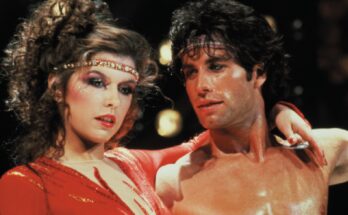Rocky IV (1985)
Rocky IV (1985), directed by and starring Sylvester Stallone, is one of the most iconic and emotionally charged films in the Rocky series. Combining Cold War tension with classic underdog determination, the movie pits American boxing hero Rocky Balboa against the fearsome Soviet powerhouse Ivan Drago, symbolizing more than just a fight between two men — it’s a battle between ideologies, pride, and personal loss.
The story begins with Rocky living comfortably after reclaiming his heavyweight title from Clubber Lang. He’s wealthy, loved by fans, and settled into a peaceful life with his wife Adrian and their son. His best friend and former rival, Apollo Creed, however, feels restless in retirement. When news spreads that the Soviet Union is sending its champion boxer, Ivan Drago (Dolph Lundgren), to the United States for an exhibition match, Apollo sees it as a chance to prove that American fighters still reign supreme.

Drago is a towering, emotionless figure — a product of intense training, steroids, and Soviet technology. Despite warnings from Rocky, Apollo insists on fighting him, viewing it as a matter of pride and patriotism. During the match, Apollo is brutally outmatched. Rocky, acting as his corner man, wants to stop the fight, but Apollo begs him not to. Tragically, Drago’s relentless punches prove fatal, and Apollo dies in the ring, collapsing in front of a horrified audience. Drago coldly declares, “If he dies, he dies.”
Crushed by guilt and rage, Rocky decides to avenge Apollo’s death by challenging Drago himself — not for money or fame, but for honor. Against Adrian’s pleas, Rocky announces that he will fight Drago on his home turf, in Moscow, on Christmas Day.
Leaving his comfortable life behind, Rocky travels to the Soviet Union to train in isolation. While Drago trains in a state-of-the-art facility using advanced machines and scientists to enhance his performance, Rocky embraces the raw, old-school methods — chopping wood, running through snow, lifting rocks, and climbing mountains. The contrast symbolizes natural heart versus mechanical strength.

As Rocky trains in the harsh wilderness, Adrian eventually arrives to support him, giving him the emotional strength he needs. Meanwhile, even some of the Soviet spectators and officials begin to respect Rocky’s determination and spirit.
The climactic fight in Moscow is one of cinema’s most memorable boxing sequences. Drago dominates early with his brutal power, but Rocky refuses to back down, absorbing punch after punch and gradually wearing his opponent down through sheer endurance and willpower. The crowd, initially hostile, starts chanting “Rocky! Rocky!” as they witness his courage.
In the final rounds, Rocky turns the tide and defeats Drago by knockout. After the fight, battered and bloodied, he delivers a heartfelt speech about change and understanding:
“If I can change, and you can change, everybody can change!”
His words break through the Cold War hostility, earning applause even from Soviet leaders and soldiers.
Rocky IV ends on a powerful note of unity and redemption. The film not only solidified Rocky Balboa as a global symbol of perseverance but also became a pop culture milestone of the 1980s — remembered for its electrifying music, training montage, and emotional depth beneath the action.



